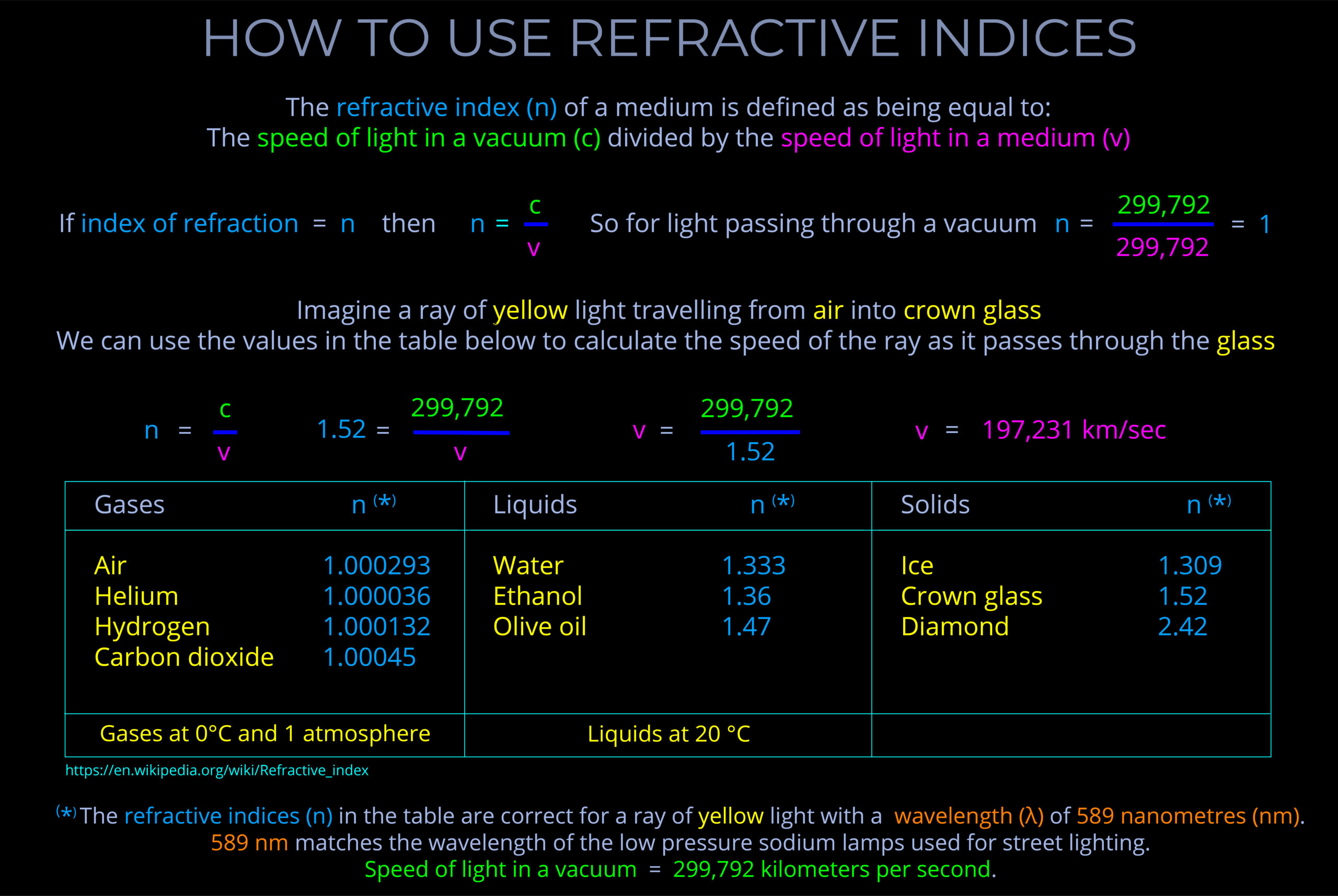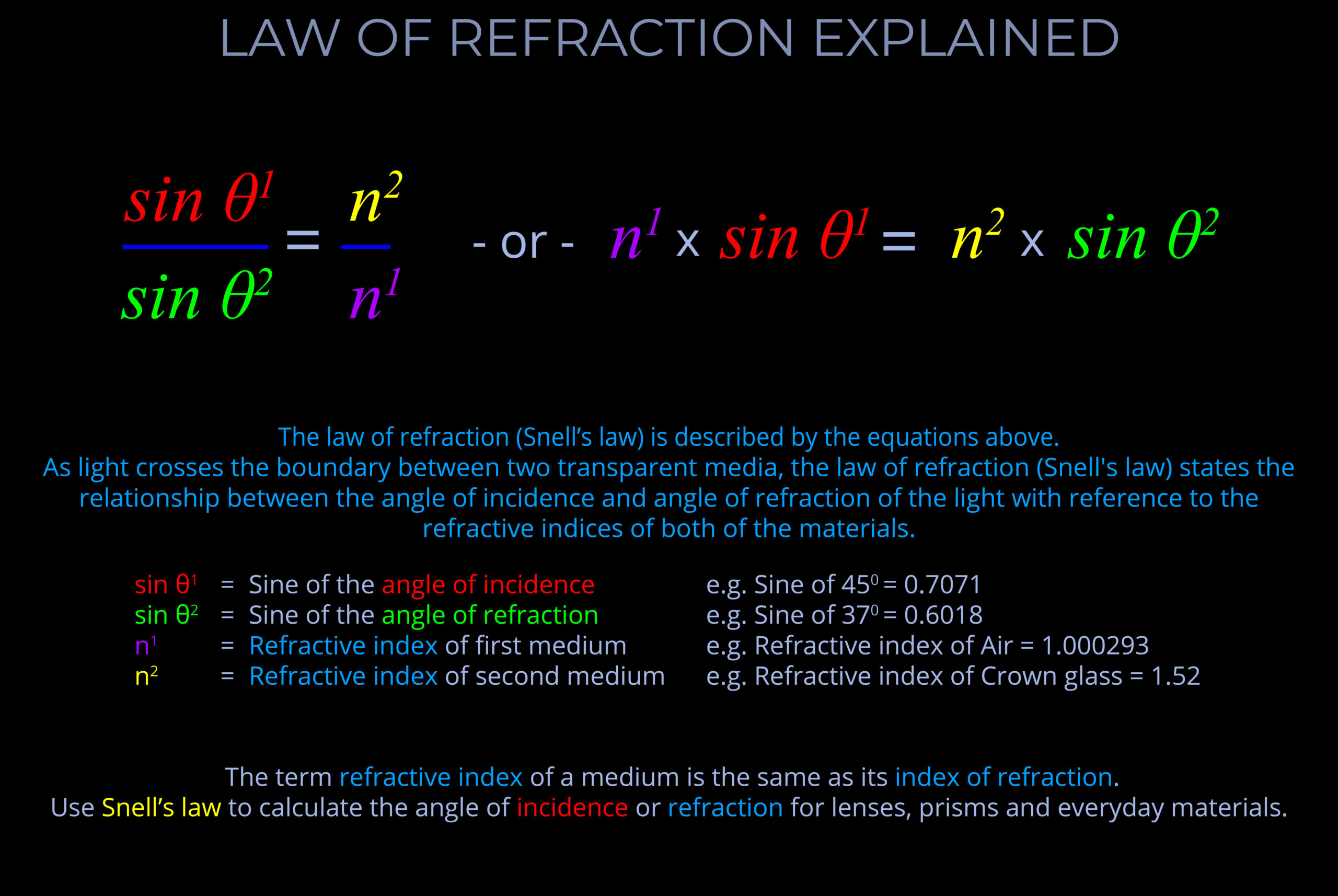The refractive index (index of refraction) of a medium measures how much the speed of light is reduced when it passes through a medium compared to its speed in a vacuum.
- Refractive index (or, index of refraction) is a measurement of how much the speed of light is reduced when it passes through a medium compared to the speed of light in a vacuum.
- The concept of refractive index applies to the full electromagnetic spectrum, from gamma-rays to radio waves.
- Refractive index can vary with the wavelength of the light being refracted. This phenomenon is called dispersion, and it is what causes white light to split into its constituent colours when it passes through a prism.
- The refractive index of a material can be affected by various factors such as temperature, pressure, and density.
- The refractive index of a medium is a numerical value and is represented by the symbol n.
- Because it is a ratio of the speed of light in a vacuum to the speed of light in a medium there is no unit for refractive index.
- The refractive index of water is 1.333, meaning that light travels at 2/3 the speed in water compared to a vacuum.
- If the refractive index of a medium is 1.5, for example, light travels at 2/3 the speed through glass compared to a vacuum.
- As light undergoes refraction, its wavelength changes, but its frequency remains the same.
- As light undergoes refraction its frequency remains the same.
- The energy transported by light is not affected by refraction or the refractive index of a medium, but the intensity of the light can be affected.


